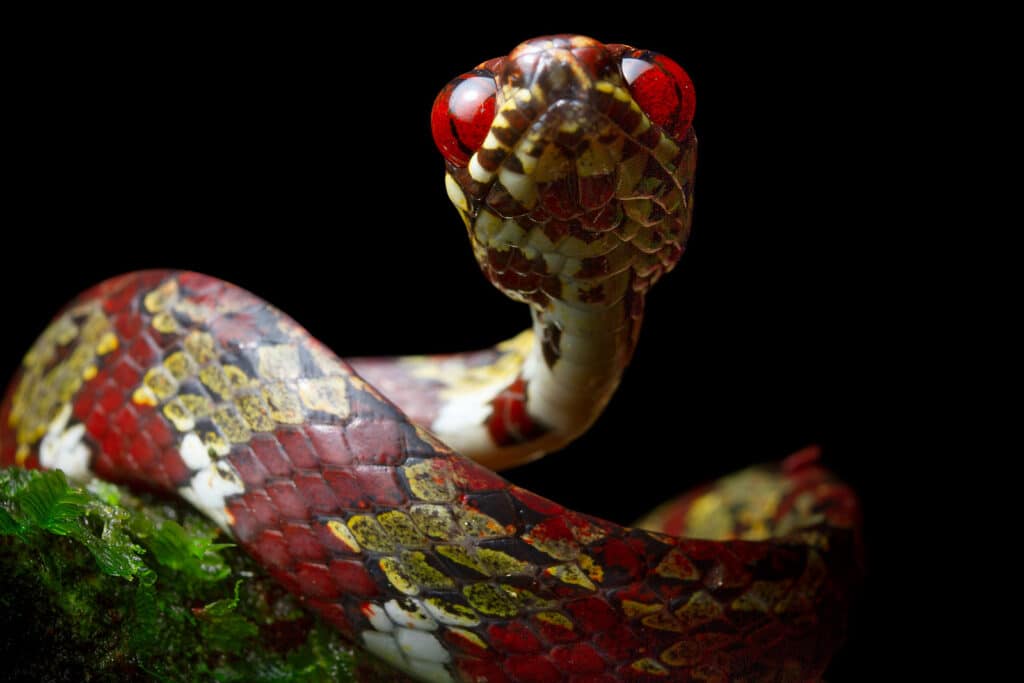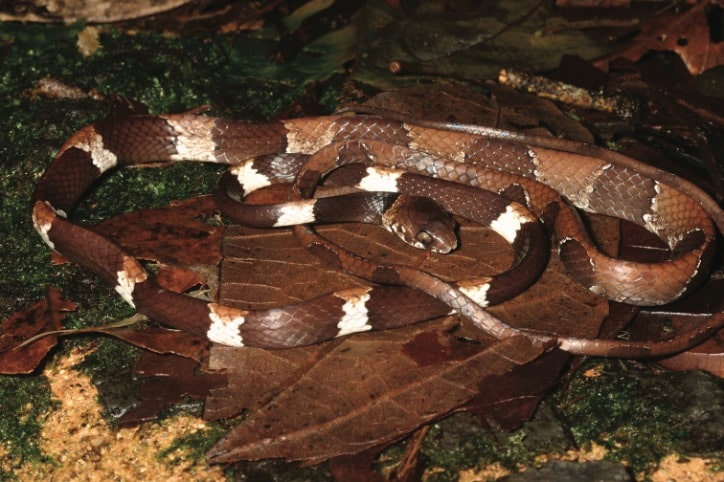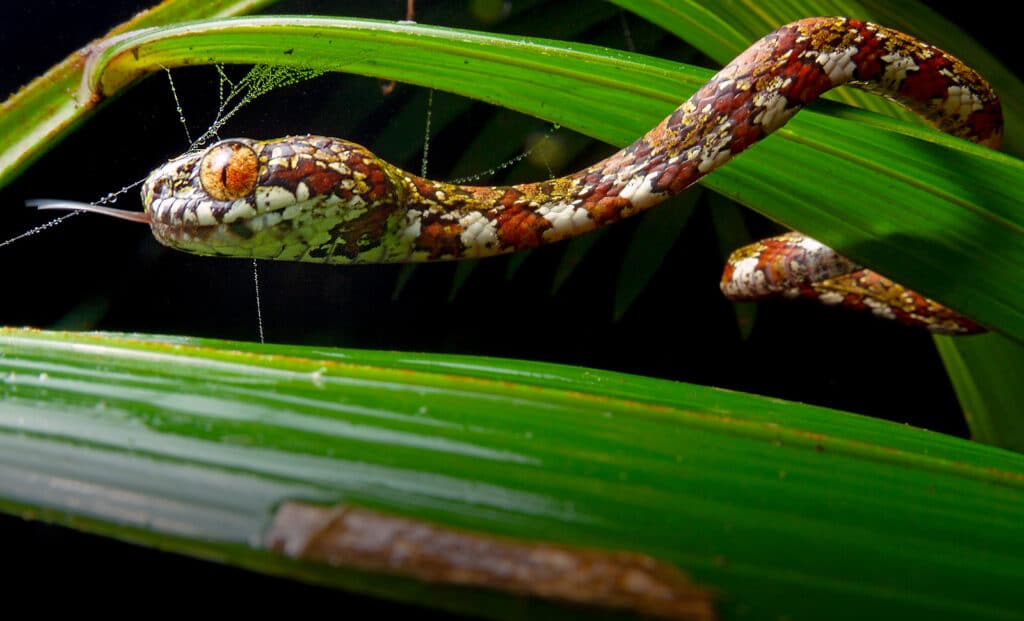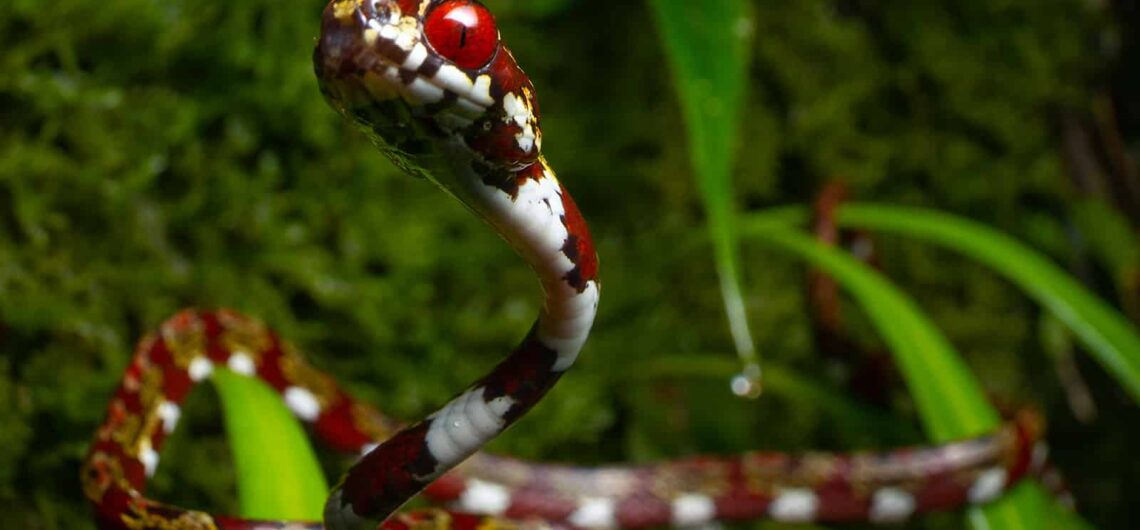By Rosannette Quesada-Hidalgo
The Ecuadorian-Venezuelan biologist and explorer Alejandro Arteaga and his team recently described three new species of snakes for Panama. In 2019, the Canopy Family invited Alejandro and his team to explore the herpetofauna of our three ecolodges, the Canopy Tower, the Canopy Lodge, and the Canopy Camp. The Canopy Family helped coordinate the logistics and transportation of the team, and this visit resulted in the discovery of two of the recently described species which occur, among other places, around the Canopy Lodge in El Valle de Antón, Coclé province. To our surprise and honor, one of the species was named Sibon canopy, after the Canopy Family. Alejandro stated, in his recently published paper describing the species in the journal ZooKeys with the Panamanian biologist Abel Batista, that they are grateful that the Canopy Family protects habitat that is critical for dozens of poorly studied snakes in Panama.

The individual used to describe S. canopy, whose proposed common name is Canopy Snail-eating Snake, was collected by Abel Batista in Cerro Gaital, a natural monument located just 15 minutes away from the Canopy Lodge, and a place we visit during our tours. The Canopy Snail-eating Snake is around 35 cm long and forages at night from vegetation 0.5 to 3 m. above the ground. To the present time this species is considered to be endemic to Panama, although one individual has been recorded near the border with Costa Rica, indicating the probable presence of this species in both countries.
The second species also occurs, among other sites, in the surroundings of the Canopy Lodge. It is called Dipsas aparatiritos and its proposed common name is Hidden Snail-eater Snake. The authors of the published paper where this species is described stated that the scientific name comes from the Greek aparatíritos, which means unnoticed, given that the snake is actually very common and was suspected to exist since 1977 in the Parque Nacional General de División Omar Torrijos Herrera, a very well-studied field site for herpetofauna near the community of El Copé, Coclé province. We also visit El Copé during our tours with visitors at the Canopy Lodge. However, the snake wasn’t well studied and named until now. The Hidden Snail-eater Snake is about 43 cm long and also forages at night in vegetation near the ground.

The third species is called Sibon irmelindicaprioae, in honor of Leonardo DiCaprio’s mother. Its suggested common name is DiCaprio’s Snail-eating Snake. As a supporter of biodiversity conservation, Leonardo DiCaprio aided with these expeditions, which also included field trips to Colombia and Ecuador. DiCaprio’s Snail-eating Snake occurs in the Chocó-Darién rainforests of eastern Panama and western Colombia. The individual used to describe the species was again found by Abel Batista, this time in the company of Milan Vesely at Cerro Bailarín, Pavarandó, in the Comarca Emberá-Wounaan in eastern Panama. This nocturnal snake is about 40 cm long, forages in vegetation 2-3 m. above the ground and when threatened, it can produce an unpleasant odor. Both genera, Sibon and Dipsas, are neotropical snail-eating serpents, and are non-venomous.

In 2022, Alejandro Arteaga created Khamai foundation, a non-governmental organization that promotes the conservation of tropical biodiversity through research and the description of new species. We are happy to support these research and conservation initiatives, and we wish Alejandro and his team much success in their quest to protect the amazing neotropical rainforests of Central and South America. We also invite you to visit Panama with our Herpetology at the Isthmus tour which will be held June 14th to 22nd, 2023, when, with the help of Dr. Stephen Mullin, an expert herpetologist, and our Canopy Family guides, we will be looking for these newly described species and all the amazing herpetofauna around the Canopy Tower and Canopy Lodge. Contact us for more information!

